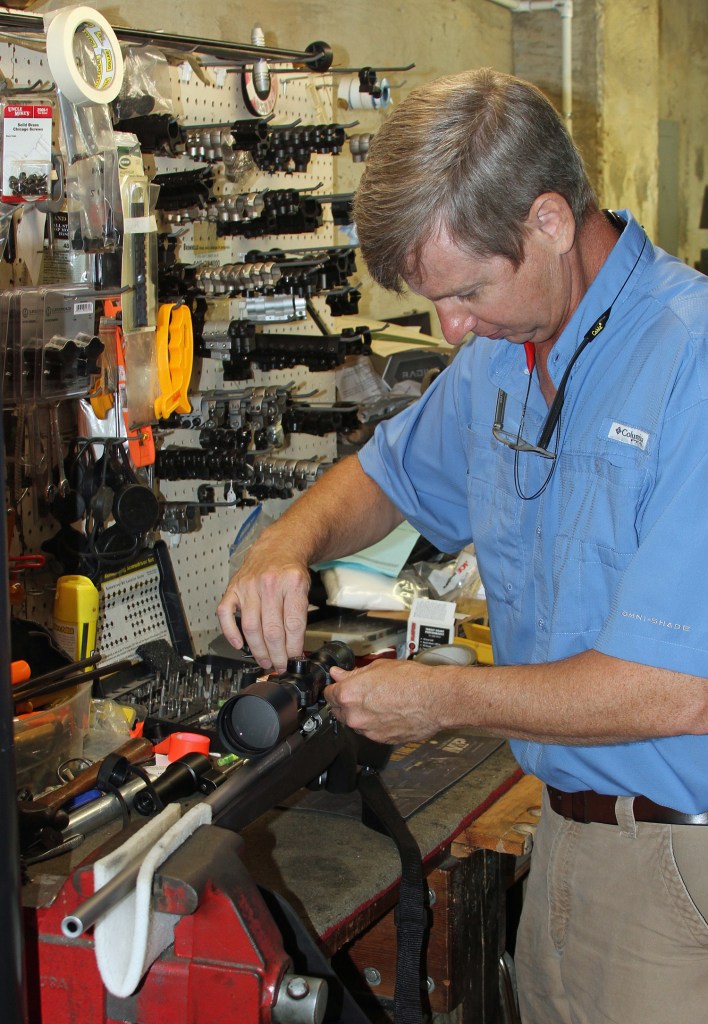Check scope, barrel before gun deer season arrives
Published 6:00 am Monday, October 30, 2017

- Brad Williamson of Quint’s Sporting Goods in Saraland makes sure the windage screws are tight before checking that the scope is level. Once the crosshairs indicate the scope is not canted, Williamson carefully tightens the ring screws.
The buck of your dreams steps into the open. You try to remain calm and get ready for the shot.
You place the crosshairs of your trusty scope-rifle combination on the deer’s shoulder and squeeze the trigger.
As the boom echoes across the bottom, the buck snaps his head to attention and then darts into the thicket with his white tail pointed skyward, indicating a clean miss.
What just happened? The scope had always been dead on, an inch high at 100 yards.
However, when you get back to camp and fire a test shot, the projectile lands 6 inches low at 100 yards.
That is why Brad Williamson at Quint’s Sporting Goods in Saraland always urges customers to check their rifles before they head to the field on the opening day of gun deer season, which happens to be Nov. 18 this year.
Williamson, the son of Del and Sandra Williamson, has grown up in the sporting goods business, and he’s seen quite a few distraught hunters come in the store on Mondays to tell how they missed the big one.
“If you didn’t move anything and you go to the range, nine times out of 10, the gun will be shooting where you left it,” Williamson said. “That one time out of 10 is what’s going to cause you to lose your big buck opening weekend.”
Typically, a missed shot from an experienced hunter can often be traced back to the riflescope and its mounting system. With the Redfield- and Leupold-style mount with windage screws to adjust the rear mount, Williamson always makes sure those screws are still tight.
Then he moves to the ring screws that hold the scope in the mount. Make sure they’re tight but don’t overtighten. A little touch of blue Loc-Tite on the threads of the screws for the rings and bases will help keep anything from coming loose.
“If you’re trying to troubleshoot something and you don’t think it’s your barrel or your scope, sometimes you have to check your base screws,” Williamson said. “Unfortunately, you have to pull the scope off to get to the bases, which costs you some more ammo to get back on target. But sometimes that’s what you have to do.”
Once the scope mount is secure and the barrel is clean, if you’re still having accuracy issues, Williamson suggests moving to the ammunition component.
“Make sure you’re shooting the same ammo you had last year,” he said. “We’ve had cases where different brands of ammo or different bullet weights would be several inches apart on the target. Some people will tell you brands don’t matter. … Ammunition does make a difference, especially when it comes to shooting different weights of bullets like 150-grain or 180-grain.”
— Rainer writes for the Alabama Department of Conservation and Natural Resources.





